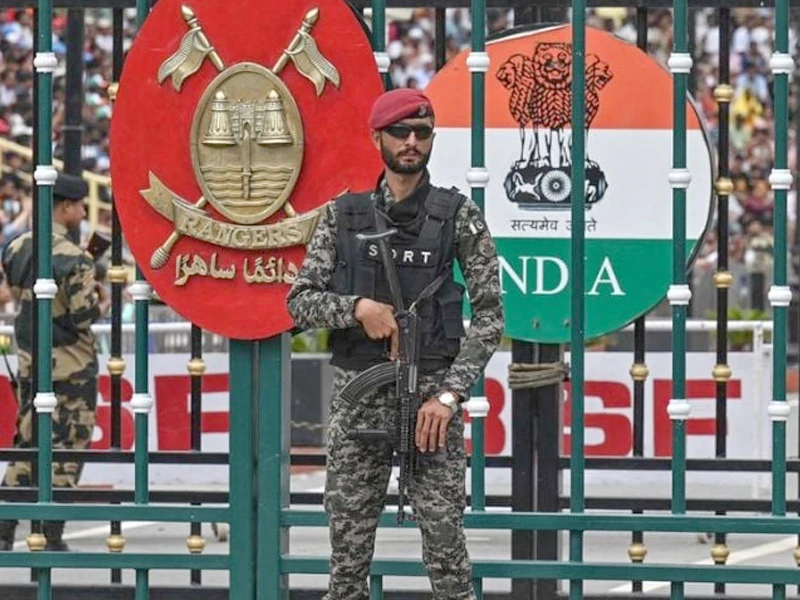For decades, Pakistan and India Agree to Ceasefire have shared a tense and often volatile relationship, marked by wars, border skirmishes, and deep-rooted political distrust. However, a recent agreement for a ceasefire between the two nuclear-armed neighbors has reignited global hope for peace in South Asia. This development is not just a diplomatic gesture but a significant shift that could impact regional stability, economic growth, and international relations.
Understanding the broader implications of this ceasefire agreement requires a closer look at its background, objectives, and potential outcomes. With the world closely watching, this decision marks a moment of both opportunity and caution for two of Asia’s most powerful countries.
Historical Context of the Indo-Pak Conflict
India and Pakistan and India Agree to Ceasefire have fought multiple wars since their independence in 1947, primarily over the disputed region of Jammu and Kashmir. Even during peacetime, the Line of Control (LoC), the de facto border in Kashmir, has seen frequent violations.
Key events that shaped the conflict:
-
1947-48: First Indo-Pak war over Kashmir
-
1965: Second war initiated by Pakistan to seize Kashmir
-
1971: War that led to the independence of Bangladesh
-
1999: Kargil conflict where Pakistani troops infiltrated Indian territory
Since then, both countries have maintained a fragile ceasefire, which has been violated countless times with cross-border firing, loss of civilian lives, and military casualties.
Details of the New Ceasefire Agreement
The recent ceasefire agreement, brokered through backchannel diplomacy and mutual military understanding, marks a renewed commitment to peace and stability. Officials from both countries confirmed that they have agreed to honor the 2003 ceasefire agreement along the LoC and all other sectors.
Main features of the agreement include:
-
Immediate cessation of firing along the Line of Control
-
Establishment of communication hotlines to prevent misunderstandings
-
Regular meetings between military officials to maintain transparency
-
Reduction of militant infiltration across borders
This move was widely appreciated by international communities, including the United Nations and several global powers, as a positive step toward conflict de-escalation.
Why This Ceasefire Matters
The timing and tone of this ceasefire suggest that Pakistan and India Agree to Ceasefire both nations recognize the heavy toll their conflict has taken—not only on their militaries but also on their economies and global standing.
Some significant reasons why this development is crucial:
-
Nuclear Stability: Both countries possess nuclear weapons. Ceasefire reduces the risk of accidental or deliberate escalation
-
Humanitarian Relief: Border residents have long lived in fear. This truce allows them a chance at normalcy
-
Economic Focus: Both India and Pakistan and India Agree to Ceasefire face economic challenges. Reduced defense expenditure can aid development
-
Global Image: A commitment to peace boosts diplomatic credibility and international relations
Challenges Ahead
Despite the optimism, history urges caution. Previous ceasefires have failed due to lack of trust and political will. The success of this agreement depends on:
-
Consistent political leadership on both sides
-
Curbing militant activity that could sabotage peace
-
Maintaining public support through transparent communication
-
Avoiding provocations from internal or external forces
Without a robust monitoring mechanism and firm commitment, the risk of this truce unraveling remains high.
Opportunities for Peace and Cooperation
This ceasefire opens the door to several possibilities that could reshape Indo-Pak relations. While major political negotiations may take time, there are immediate areas where progress can be made:
-
Resumption of trade between the two countries
-
Revival of diplomatic dialogues and consular services
-
Joint environmental and water management projects
-
Cultural and sports exchanges to foster people-to-people contact
Even symbolic gestures like allowing pilgrims easier access to religious sites or restarting cricket matches can help soften public opinion on both sides.
International Reaction
The global community has reacted positively, Pakistan and India Agree to Ceasefire viewing this ceasefire as a much-needed reprieve in a region often seen as a potential flashpoint. Major powers have encouraged both nations to build on this momentum.
Some responses include:
-
Praise from UN Secretary-General for the constructive move
-
Statements from the United States and China urging Pakistan and India Agree to Ceasefire sustained dialogue
-
Encouragement from neighboring countries like Afghanistan and Nepal
These responses underscore the international desire for South Asia to emerge as a peaceful, cooperative region.
FAQs
What is the Line of Control (LoC)?
The LoC is the military control line between the Pakistan and India Agree to Ceasefire controlled parts of the former princely state of Jammu and Kashmir. It is not a legally recognized international boundary but serves as the de facto border.
When was the last significant ceasefire between India and Pakistan?
The most notable ceasefire agreement was signed in 2003. Although it reduced hostilities for a time, frequent violations followed in subsequent years.
Does this ceasefire mean the Kashmir issue is resolved?
No. While the ceasefire helps reduce violence, the core political dispute over Kashmir remains unresolved.
Will there be more peace talks soon?
There is hope that this ceasefire will pave the way for further diplomatic engagement, but no formal talks have been announced yet.
How does this affect common people in border areas?
The ceasefire provides much-needed relief to civilians living along the LoC, reducing the threat to life and allowing them to rebuild their lives.
Conclusion
The recent ceasefire agreement between Pakistan and India Agree to Ceasefire is more than just a military decision—it is a symbol of hope in a region that has seen far too much conflict. While skepticism is natural, the benefits of a sustained peace are too significant to ignore. This truce can be the first brick in building a foundation of trust, cooperation, and regional prosperity.





